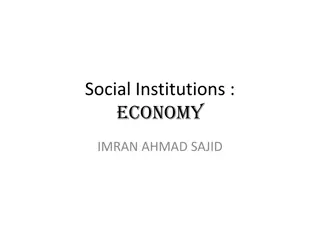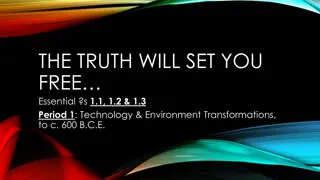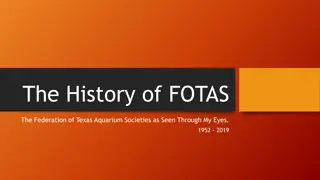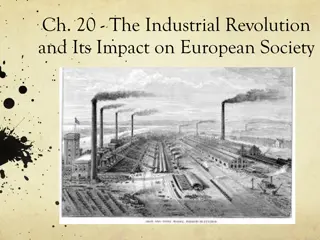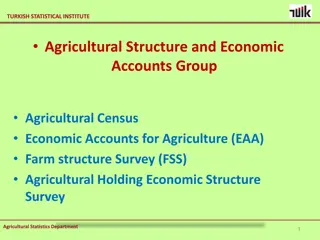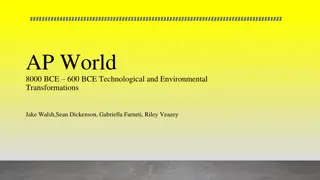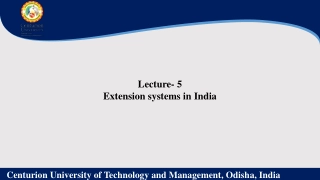The Evolution from Paleolithic Societies to Agricultural Revolution
Exploring the transition from small Paleolithic societies relying on gathering and hunting to the Agricultural Revolution that brought deliberate cultivation of plants and animals. The shift marked a revolutionary transformation in human life, impacting economies, environments, spiritual beliefs, and societal structures. Images and descriptions illustrate the changes in roles, economies, and spiritual practices during this historical shift.
Download Presentation

Please find below an Image/Link to download the presentation.
The content on the website is provided AS IS for your information and personal use only. It may not be sold, licensed, or shared on other websites without obtaining consent from the author. Download presentation by click this link. If you encounter any issues during the download, it is possible that the publisher has removed the file from their server.
E N D
Presentation Transcript
Agricultural Evolution Ar. Manish kumar
FIRST PEOPLE FIRST FARMER
THE FIRSTHUMAN SOCIETIES ? Paleolithic societies were small (20 to 50 people). The available technology permitted only a very low population density and ensured an extremely slow rate of population growth. ? Environmental disasters (volcano eruptions) didn't help for the population to grow. ? Paleolithic bands were nomadic, moving frequently.
Paleolithic men and women ? The male role as a hunter killing large animals. ? Relationships between women and men usually were far more equal than in later societies. ? As the primary food gatherers women provided the bulk of the family. Gathering plants, vegetables 70% of the diet vs 30% meat animal from men. ? Equality between the sexes no one having the upper hand.
Economy and Environment ? Gathering and hunting: main economy ? Dangerous environment on the vagaries of nature. ? Needed to little to survive; avarage 35 years. ? Paleolithic people also acted to alter the natural environment: fires to encourage groth of particular plants. ? Extinction of various animals followed fairly quicly after the arrival of human beings.
Spiritual life ? Art is thought to many interpretations, and the experience of contemporary gathering and hunting peoples may not reflect the distant past. ? Rock art in caves. Rituals, burial sites = ceremonial spaces. ? Some historians suggest that Africa Paleolithic societies were monotheistic. Others thought in the believing of many spirits.
BreakthroughstoAgriculture ? The term Neolithic (new stone age) Revolution or Agricultural Revolution refers to the deliberate cultivation of particular plants as well as the taming and breeding of particular animals. ? New way of life replaced the earlier practices of gathering and hunting. It represented a revolutionary transformation of human life across the planet. ? Domestication; the taming, the changing f nature for the benefits of humankind. ? Dependence of both: animals to humans and viceversa. ?Intensification: getting more for less, food and resources. growing populations.
BreakthroughstoAgriculture ? The term Neolithic (new stone age) Revolution or Agricultural Revolution refers to the deliberate cultivation of particular plants as well as the taming and breeding of particular animals. ? New way of life replaced the earlier practices of gathering and hunting. It represented a revolutionary transformation of human life across the planet. ? Domestication; the taming, the changing f nature for the benefits of humankind. ? Dependence of both: animals to humans and viceversa. ? Intensification: getting more for less, food and resources. growing populations.
Fertile Crescent ? SouthwestAsia, present day Iraq, Syria, Israel/Palestine, Jordan, and SouthTurkey. ? Extraordinary variety of wild plants and animals. Was the site of many significant processes in early World History, including the 1st breakthrough to agriculture and the development of the first civilizations.
What different kinds of societies emerged out of theAgricultural Revolution ? Pastoral societies ? Agricultural Village societies ? Chiefdoms




